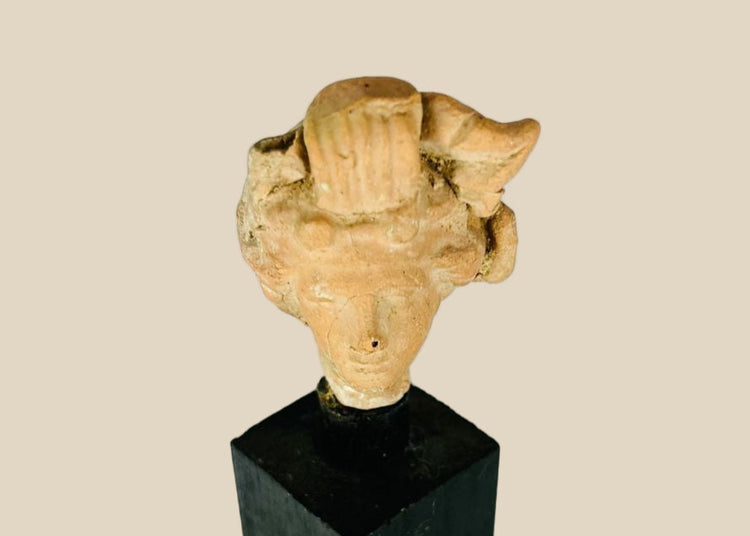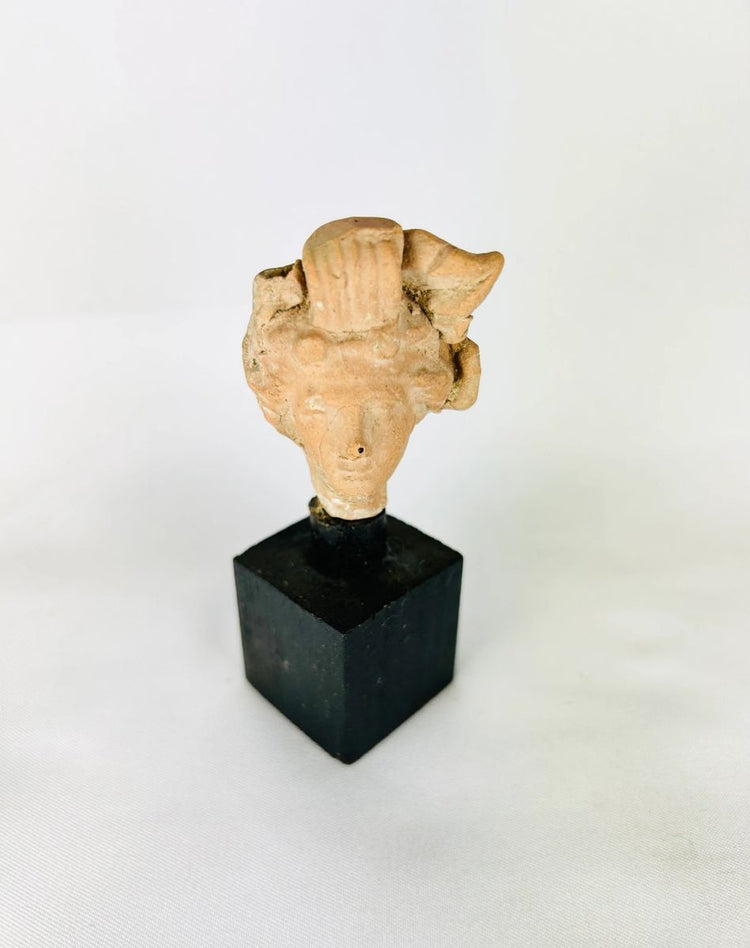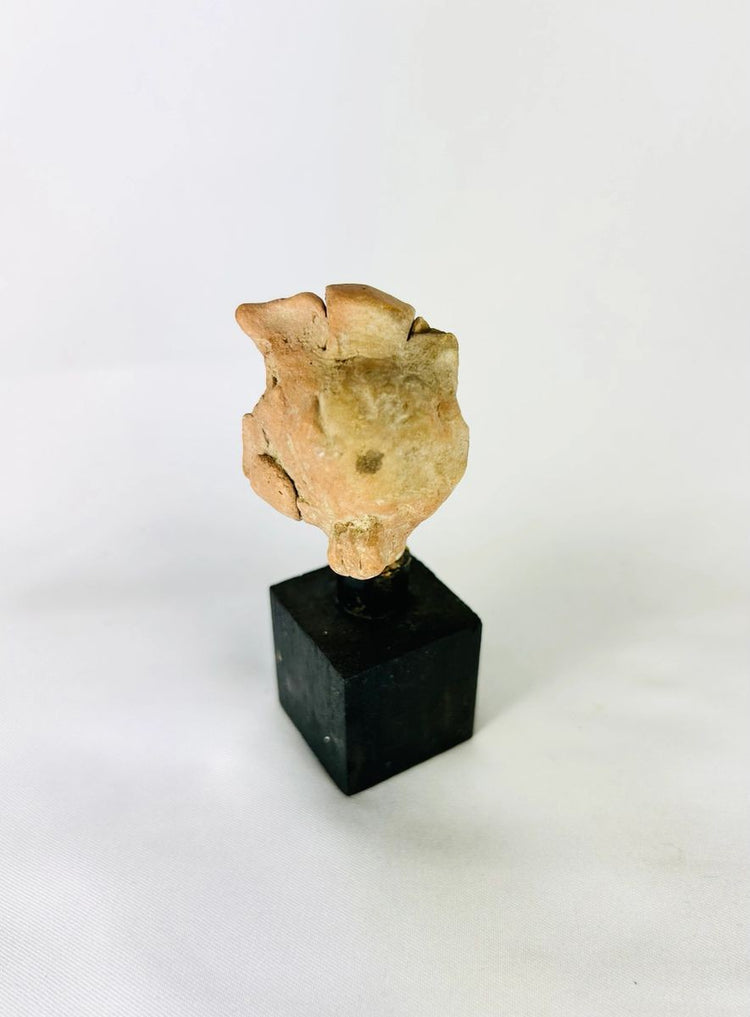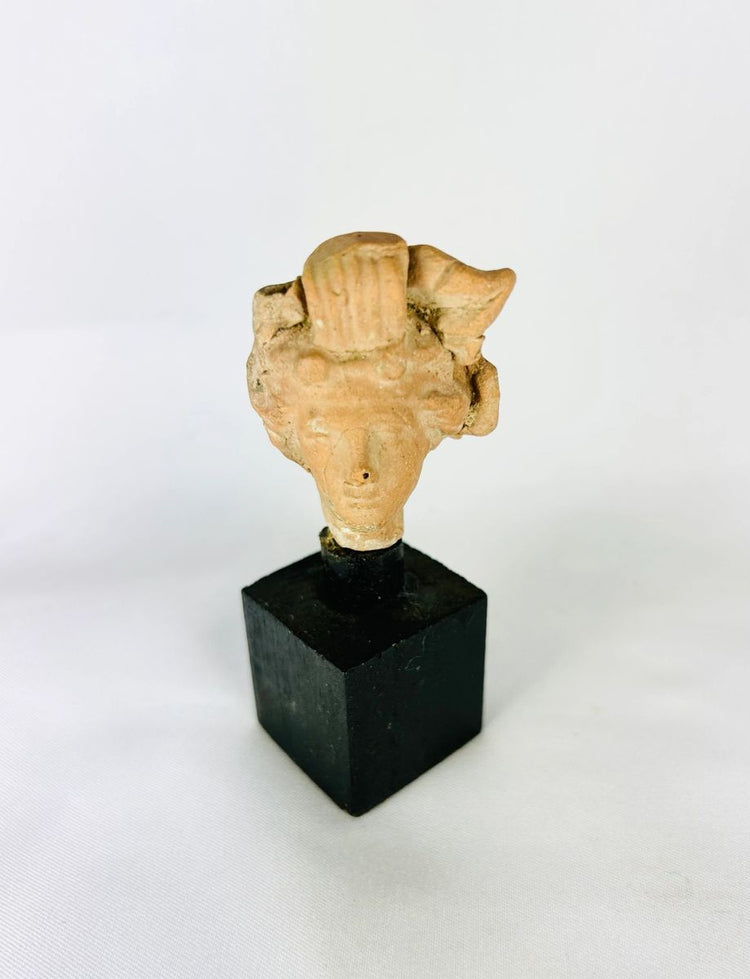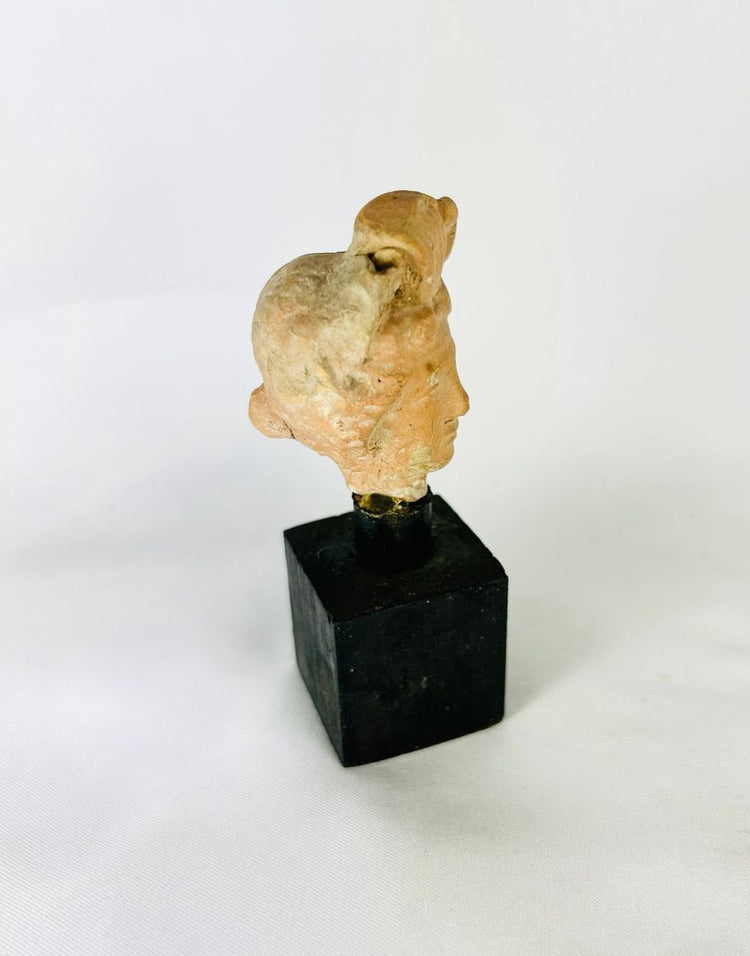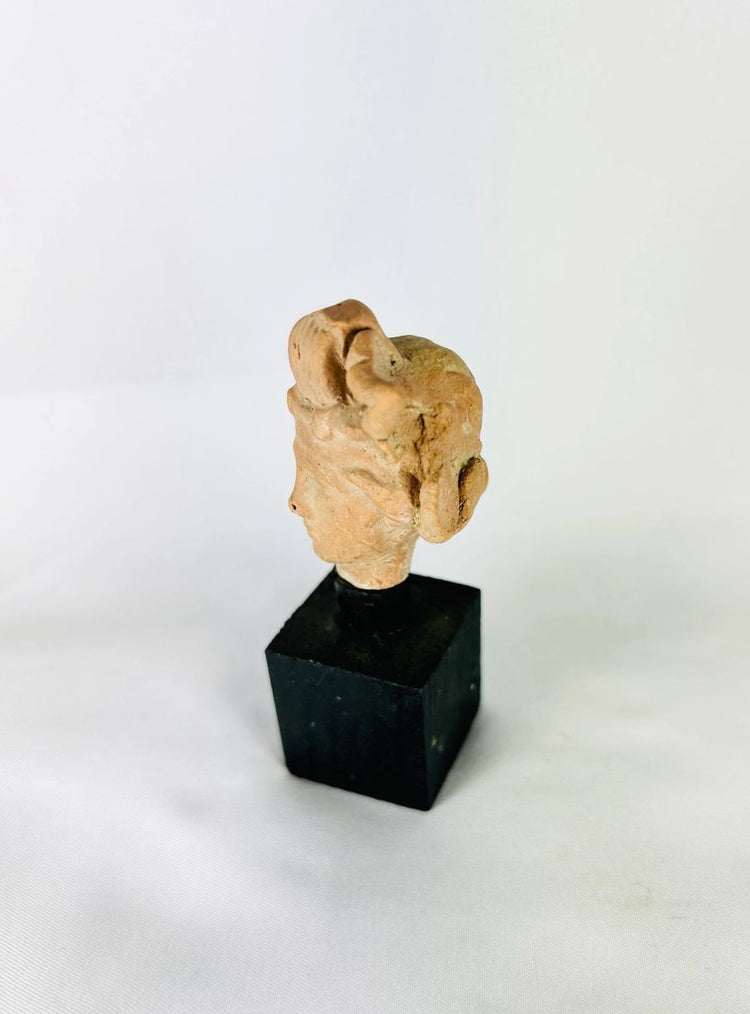Ancient Terracotta Head Figurine Fragment | Roman/Mediterranean Artifact | 1st-2nd Century
Description
More
Less
Historical Context & Origin
Region: Greco-Roman world (likely Mediterranean basin)
Material: Terracotta
Period: Hellenistic to Greco-Roman, circa 4th–1st Century BCE
Description
This elegant terracotta head fragment, measuring approximately 3.5 inches in height, exemplifies the refined artistry and classical aesthetics of the ancient Mediterranean world. Likely once part of a larger figurine or votive statue, the fragment may have represented a deity, noble figure, or idealized individual. Despite surface wear, the delicate facial contours and remnants of an elaborate hairstyle or headgear preserve an expressive, naturalistic quality that reflects the sculptural mastery of the Hellenistic and Greco-Roman periods. Mounted on a modern black base, it displays beautifully as both an artifact and a piece of classical art.
Features
- Expressive facial details in the Hellenistic naturalistic style
- Elaborate hairstyle or headgear suggesting social or divine significance
- Terracotta construction, a favored medium for votive and funerary figures
- Natural patina and surface wear consistent with ancient burial and age
- Mounted on a modern black base for secure display
Cultural Significance
Hellenistic sculpture marked a turning point in ancient art, emphasizing naturalism, individuality, and emotion. Terracotta figurines were widely produced across the Greco-Roman world, serving religious, decorative, and funerary purposes. This fragment embodies that cultural synthesis—combining expressive Greek forms with the widespread Roman adoption of terracotta as a medium. Such artifacts provide invaluable insight into ancient artistic traditions, devotional practices, and the shared aesthetics of the classical world.
Condition
Well-preserved fragment with surface wear and natural patina. Mounted for stability and display.
Dimensions (approximate)
Height: 3.5 in
Age
Circa 4th–1st Century BCE
Learn More
Uncover the World of Ancient Greece & Rome
Description
Historical Context & Origin
Region: Greco-Roman world (likely Mediterranean basin)
Material: Terracotta
Period: Hellenistic to Greco-Roman, circa 4th–1st Century BCE
Description
This elegant terracotta head fragment, measuring approximately 3.5 inches in height, exemplifies the refined artistry and classical aesthetics of the ancient Mediterranean world. Likely once part of a larger figurine or votive statue, the fragment may have represented a deity, noble figure, or idealized individual. Despite surface wear, the delicate facial contours and remnants of an elaborate hairstyle or headgear preserve an expressive, naturalistic quality that reflects the sculptural mastery of the Hellenistic and Greco-Roman periods. Mounted on a modern black base, it displays beautifully as both an artifact and a piece of classical art.
Features
- Expressive facial details in the Hellenistic naturalistic style
- Elaborate hairstyle or headgear suggesting social or divine significance
- Terracotta construction, a favored medium for votive and funerary figures
- Natural patina and surface wear consistent with ancient burial and age
- Mounted on a modern black base for secure display
Cultural Significance
Hellenistic sculpture marked a turning point in ancient art, emphasizing naturalism, individuality, and emotion. Terracotta figurines were widely produced across the Greco-Roman world, serving religious, decorative, and funerary purposes. This fragment embodies that cultural synthesis—combining expressive Greek forms with the widespread Roman adoption of terracotta as a medium. Such artifacts provide invaluable insight into ancient artistic traditions, devotional practices, and the shared aesthetics of the classical world.
Condition
Well-preserved fragment with surface wear and natural patina. Mounted for stability and display.
Dimensions (approximate)
Height: 3.5 in
Age
Circa 4th–1st Century BCE
Learn More
Uncover the World of Ancient Greece & Rome
You May Also Like




















